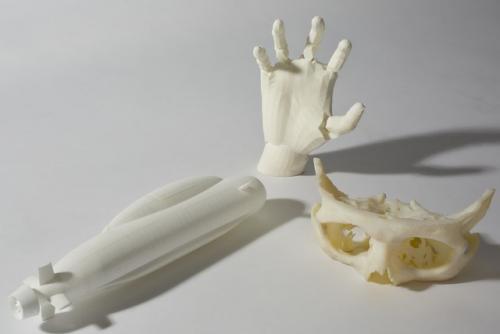Is 3D Printing Growing in the Healthcare Industry?

The global healthcare
3D printing market is estimated to grow at a CAGR of 15.6% from 2014 to 2020 on
account of growing need for manufacturing automated products. Rising geriatric
population and increasing healthcare requirements across the globe have been
majorly driving demand. Rise in number of orthopaedic and cardiovascular
disorders occurring prominently among the aged population have resulted in an
increased demand for these printing facilities.
Healthcare 3D printing market provides
significant opportunities for manufacturing various medical equipment including
dental implants, prosthetic limbs,
hearing aids and orthotic footwear. Government initiatives to develop
healthcare infrastructure and rising investments for R&D are some of the
factors driving growth. The ability of the technology to reduce the risks
involved with anaesthesia during prolonged surgeries has been another factor
resulting in their increasing demand. The market is estimated to be worth USD
1.13 billion by 2020.
Polymers captured over 35% of the overall market
share in 2013, dominating the raw material segment of the healthcare 3D
printing industry. They are primarily used in bio-model printing.
Ceramics are commonly used for manufacturing tooth
or mandible (jaw bone). Increasing occurrences of tooth problems including
fractures and decays resulting in replacement of crowns or entire teeth is
expected to propel demand for biocompatible materials including ceramics. The
market is expected to grow at a CAGR of 15.6% over the forecast period.
Implants accounted for over 60.0% of the global
market share in 2013. They are not only cost effective but also provide
accuracy which is expected to fuel demand. Customized orthopedic implants
increase performance as they reduce time duration of surgeries. Also, it is
convenient and less expensive to tailor 3D printed parts. Dental printers
provide metal and wax prosthetics. Rising consumer awareness regarding
maintaining oral health is expected to bolster growth over the projected
period.
Photo-polymerization technology is extensively
utilized by research organizations to produce accurate and efficient
bio-models. It was valued over USD 140.0 million in 2013 dominating the global
industry. However, laser beam melting is estimated to grow at a CAGR exceeding
16% from 2014 to 2020, thus, becoming the fastest growing technology. It is
mostly used for producing orthopedic implants.
North America accounted for over 35% of the global
revenue dominating the regional industry in 2013. Rising awareness among
patients, mounting investments for dedicated R&D facilities, advanced
healthcare infrastructure coupled with development of 3D printing-based
products are expected to drive demand in the region over the forecast period.
Rising demand for customized medical equipments and
huge investments in R&D programs in Europe are expected to make it the
fastest growing market in the next few years. Increasing healthcare investments
and expenditures in emerging economies of Asia Pacific are expected to drive
demand at a rapid pace over a period of six years.
Prominent players in the industry include Envision
TEC, Materialise NV, Stratasys Inc., 3D Systems Software, Organovo, Bio-Rad
Laboratories, SOLS, Metamason, Simbionix, RegenHU Ltd., Youbionic, 3D Matters
Pte Ltd., 3D Systems Corporation (3DS), Roche Pharmaceuticals, Ekso Bionics,
Renishaw plc., Delcam India, Robohand, Worrell, Archam, ALD Vacuum Technologies
and Rainbow Biosciences.
Access
full research report on global healthcare 3D printing market:
www.grandviewresearch.com/industry-analysis/healthcare-3d-printing-market
Post Your Ad Here





Comments